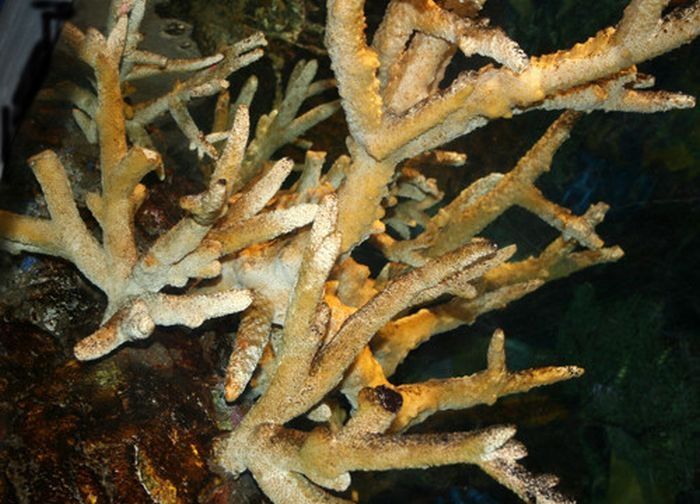|
|
Coral Organisms
|
Although corals can catch small fish and animals such as plankton using stinging cells on their tentacles, most corals obtain the majority of their energy and nutrients from photosynthetic unicellular algae called zooxanthellae. Such corals require sunlight and grow in clear, shallow water, typically at depths shallower than 60 metres (200 ft). Corals can be major contributors to the physical structure of the coral reefs that develop in tropical and subtropical waters, such as the enormous Great Barrier Reef off the coast of Queensland, Australia. Other corals do not have associated algae and can live in much deeper water, with the cold-water genus Lophelia surviving as deep as 3,000 metres (9,800 ft). Examples live on the Darwin Mounds located north-west of Cape Wrath, Scotland. Corals have also been found off the coast of the U.S. in Washington state and the Aleutian Islands in Alaska.
Taxonomy
Corals divide into two subclasses, depending on the number of tentacles or lines of symmetry, and a series of orders corresponding to their exoskeleton, nematocyst type and mitochondrial genetic analysis. Those with eight tentacles are called octocorallia or Alcyonaria and comprise soft corals, sea fans and sea pens. Those with more than eight in a multiple of six are called hexacorallia or Zoantharia. This group includes reef-building corals (Scleractinians), sea anemones and zoanthids.
|
|









